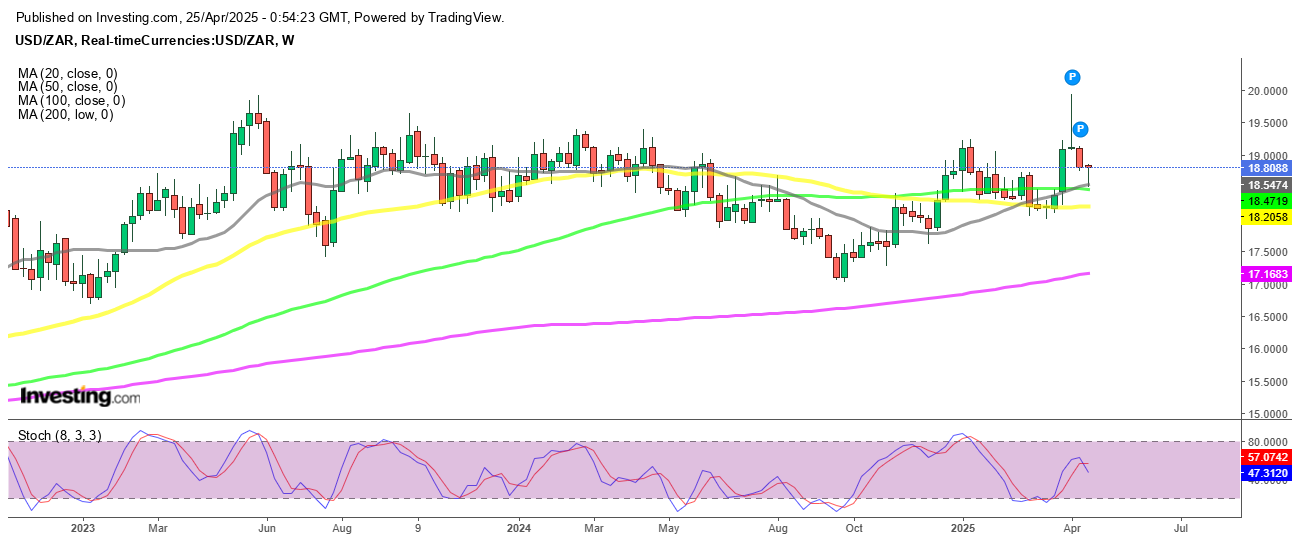USD/ZAR Smashes Through 20 as South Africa’s Rand Gets Left in the BRICS Dust
The rand’s freefall continues—while its BRICS counterparts show resilience, South Africa’s currency is becoming the group’s weak link. Dollar-rand volatility spikes as traders brace for uncharted territory.
Why the lag? Local power cuts, sluggish reforms, and that classic emerging-market cocktail of political uncertainty and capital flight. Meanwhile, Russia’s ruble rides oil prices, China’s yuan plays the long game, and even Brazil’s real finds support in commodities.
Another grim milestone for forex traders: the psychological 20.00 barrier now looks less like a ceiling and more like a springboard. Cue the usual chorus of central bank ’concern’ and empty intervention threats. Place your bets—the house always wins.
Rand Struggles as USD/ZAR Climbs Toward the 20 Mark
Even as the US dollar broadly weakens this year, the USD/ZAR pair has been pushing steadily higher, nearly reaching the critical 20.00 threshold again in early April. This marks the second such attempt since June 2023, when bulls first tested this long-standing resistance. While that breakout ultimately failed, the swift recovery from recent pullbacks suggests that upward momentum is building once again.
USD/ZAR Weekly Chart – Retreat Stalled at MAs
The price action over the past week reflects this shift. Although USD/ZAR retreated after testing the resistance zone earlier in the month, the pullback found solid footing at major moving averages on the weekly chart. Yesterday’s rebound confirmed that this was a brief correction rather than a reversal, keeping the broader uptrend intact.
Rand Falls Behind in BRICS Currency Performance
Among BRICS currencies, the South African Rand remains the weakest performer in 2025. While others like the euro and yen have shown stronger rebounds against the dollar recently, the rand has lagged—highlighting structural vulnerabilities in South Africa’s economy and capital markets.
The dollar’s recent softness—driven by dovish Fed expectations and geopolitical recalibrations—has not been enough to halt the rand’s downward slide. This divergence underscores the fragile state of the rand and makes USD/ZAR a strong candidate for continued upside pressure.
Geopolitical Factors Add to FX Volatility
A key wildcard remains ongoing global trade negotiations. This week, the White House reaffirmed its push for multiple bilateral agreements, particularly with Japan and European partners. Such developments could isolate China further and reshape global capital flows—potentially adding to volatility in emerging market currencies like the rand.
USD/ZAD Chart Monthly – The Larger trend Remains Bullish
While a full US-China trade accord may still be far off, market participants are pricing in the likelihood of eventual compromise. If deals are struck with multiple major economies, the resulting policy shifts and capital reallocations could drive fresh volatility in USD/ZAR and beyond.
Conclusion: Momentum Points to a Break Above 20 for USD/ZAR
All signs suggest the USD/ZAR pair is building toward another test of the 20.00 level, with higher odds of a sustained breakout this time around. Barring a major shift in South Africa’s macro landscape, the rand’s relative weakness and global trade dynamics could combine to drive the pair decisively higher. Traders should stay alert—especially as global policy headlines and trade agreements continue to shape sentiment across the FX landscape.



